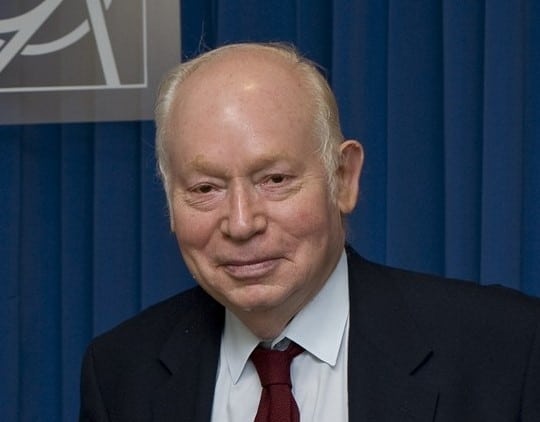Matin Durrani recalls his brushes with the Nobel-prize-winning physicist Steven Weinberg, who died on 23 July 2021 at the age of 88.

For reasons I can no longer quite remember, I was once invited to CERN to interview the Nobel-prize-winning theoretical physicist Steven Weinberg. I think Weinberg, who died last month, had travelled to Geneva to lecture on the development of the Standard Model of particle physics, in which he had played a key part, and there was time in his schedule for journalists like me to quiz the great man.
It’s usually the case that the simplest questions reveal the most illuminating answers, but that tactic, with Weinberg, was like asking someone who’d scaled Everest what they thought of the picnic tables at base camp. I was completely out of my depth.
If he was irritated or bored by my remarks, Weinberg was too polite to let it show.
If he was irritated or bored by my remarks, Weinberg was too polite to let it show and he responded with trademark lucidity and insight. He probably felt that anyone seeking a succinct explanation of his thinking should read one of his many books and essays, which
set out his ideas precisely as he wanted.
The First Three Minutes remains one of the best popular books about cosmology, while his three-volume The Quantum Theory of Fields was vital for any serious theorist thirsting to make progress on nature’s inner workings.

US Nobel-prize-winning physicist Steven Weinberg dies aged 88
Despite some misgivings, I wrote up the interview and e-mailed it to Weinberg to check. He replied pointing out a few errors I’d made near the start – and flatly refused to read it further. I shouldn’t have been surprised, given that Weinberg was used to working largely alone.
Most of his papers were single-authored, including “A model of leptons” (Phys. Rev. Lett. 19 1264), in which he described the unification of the electromagnetic and weak forces. Just three pages long, it led to his Nobel prize, which he shared with Abdus Salam and Sheldon Glashow, and remains one of the most highly cited papers of all time.
Weinberg’s approach was atypical in a world where thousands routinely collaborate – as they did, for example, to generate the first image of a black hole. But that’s not to say that Weinberg was a loner or curmudgeon. He enjoyed the arts and had a keen interest in the history of science, as I witnessed firsthand (see photo) at a session of the 2016 March meeting of the American Physical Society (APS), organized by Physics World columnist Robert Crease.

A trip through Weinberg’s world
Speaking in the wake of his book To Explain the World, which outlined the development of the scientific method, Weinberg reminded delegates at the APS that he was unashamedly a “Whig historian”. The notion that we can only understand the past from the present enraged historians, but Weinberg’s position was at least clear and honest.
He defended his stance in a letter to Physics World a few months later, saying that René Descartes, for example, was flawed not because of his scientific errors but his “mistaken self-confidence” in his method for seeking truth. After all, as he wryly noted, “All scientists make scientific errors – even me.”
I just wish he’d corrected mine.
